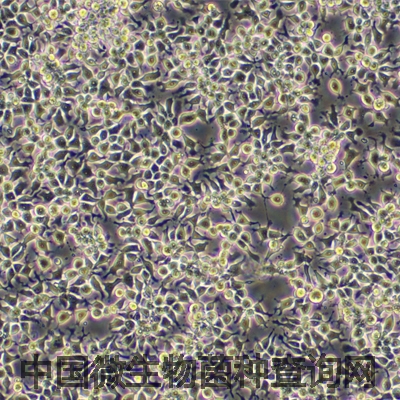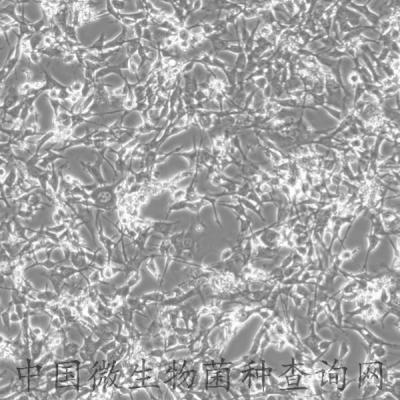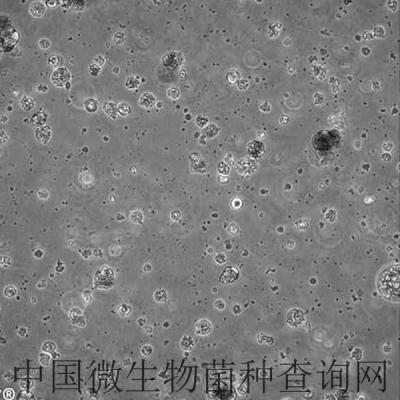
數(shù)量:大量
生長狀態(tài):貼壁生長
細胞類型:其他細胞類型
年限:adult
是否是腫瘤細胞:0
物種來源:人
ATCC Number:CRL-11233?
組織來源:left lobe
運輸方式:凍存運輸
器官來源:肝
細胞形態(tài):上皮樣
規(guī)格:0.5mg Designations: THLE-3
Depositors: ?National Cancer Institute
Biosafety Level:2 [Cells contain SV-40 viral DNA sequences ]
Shipped: frozen
Medium & Serum: See Propagation Growth Properties:adherent
Organism: Homo sapiens deposited as human
Morphology:epithelial
Source: Organ: liver
Tissue: left lobe
Cell Type: epithelialimmortalized with SV40 large T antigen
Cellular Products:The cells express cytokeratin 18 and albumin in early passage, whereas higher-passage cells in logarithmic-phase growth also express cytokeratin 19. [56166 ]
Permits/Forms:In addition to the MTA mentioned above, other ATCC and/or regulatory permits may be required for the transfer of this ATCC material. Anyone purchasing ATCC material is ultimately responsible for obtaining the permits. Please click here for information regarding the specific requirements for shipment to your location.
Applications:The THLE-2 (ATCC CRL-10149 and the THLE-3 (ATCC CRL-11233 ) cell lines were derived from primary normal liver cells by infection with SV40 large T antigen.
These immortalized human liver cells constitute an in vitro model for pharmacotoxicological studies and for the investigation of etiology and pathogenesis of human hepatocellular carcinoma.
Tumorigenic:NO
DNA Profile (STR):Amelogenin: X
CSF1PO: 11,12
D13S317: 13
D16S539: 11,12
D5S818: 13
D7S820: 8,10
THO1: 8,9.3
TPOX: 6,9
vWA: 17,18
Cytogenetic Analysis:near diploid [56166 ]
Age: adult
Comments:The THLE-2 (ATCC CRL-10149 and the THLE-3 (ATCC CRL-11233 ) cell lines were derived from primary normal liver cells by infection with SV40 large T antigen.
The virus was generated by introducing a retroviral vector containing the of Bgl I-Hpa I fragment of SV40 T antigen into the amphotropic packaging cell line PA317.
THLE-2 and THLE-3 cells express phenotypic characteristics of normal adult liver epithelial cells. They are nontumorigenic when injected into athymic nude mice, have near-diploid karyotypes, and do not express alpha-fetoprotein.
THLE-2 and THLE-3 cells metabolize benzo[a]pyrene, N-nitrosodimethylamine, and aflatoxin B1 to their ultimate carcinogenic metabolites that adduct DNA, which indicates functional cytochrome P450 pathways.
Other enzymes involved in metabolism of chemical carcinogens, such as epoxide hydrolase, NADPH cytochrome P450 reductase, superoxide dismutase, catalase, glutathione S-transferases, and glutathione peroxidase are also retained by THLE cells.
These immortalized human liver cells constitute an in vitro model for pharmacotoxicological studies and for the investigation of etiology and pathogenesis of human hepatocellular carcinoma.
A culture submitted to the ATCC in January of 1993 was found to be contaminated with mycoplasma. Progeny were cured by a 19-day treatment with Progeny were cured by a 21-day treatment with mycoplasma removal agent (MRA).
The cells were assayed for mycoplasma, by the Hoechst stain, PCR and the standard culture test, after a six-week period following treatment. All tests were negative.
Propagation: ATCC complete growth medium: BEGM from Clonetics Corporation, Walkersville, MD 21793 (BEGM Bullet Kit; CC3170). The kit includes 500 ml basal medium and separate frozen additives from which we discard the gentamycin/ Amphotericin (GA) and Epinephrine and to which we add extra 5 ng/ml EGF, 70 ng/ml Phosphoethanolamine and 10% fetal bovine serum.
Temperature: 37.0℃
Subculturing: Protocol: Remove medium, add fresh 0.05% trypsin - 0.53 mM EDTA, rinse and remove trypsin. Allow the culture to sit at room temperature (or 37C) until the cells detach (about 5 to 15 minutes) . Neutralize the trypsin with 0.1% soybean trypsin inhibitor. Resuspend the cells in fresh medium, aspirate and dispense into coated flasks.
Flasks used to propagate these cells must be coated (2 hours at 37C) with 0.01 mg/ml bovine serum albumin, 0.01 mg/ml fibronectin and 0.03 mg/ml bovine collagen type I .
Subcultivation Ratio: A subcultivation ratio of 1:3 to 1:6 is recommended
Medium Renewal: Every 2 to 3 days
Preservation: Freeze medium: Complete growth medium, 95%; DMSO, 5%
Storage temperature: liquid nitrogen vapor phase
Related Products:recommended serum:ATCC 30-2020
References: 56164: Harris CC, et al. Human liver epithelial cells. US Patent 5,759,765 dated Jun 2 1998
56166: Pfeifer AM, et al. Simian virus 40 large tumor antigen-immortalized normal human liver epithelial cells express hepatocyte characteristics and metabolize chemical carcinogens. Proc. Natl. Acad. Sci. USA 90: 5123-5127, 1993. PubMed: 7685115





